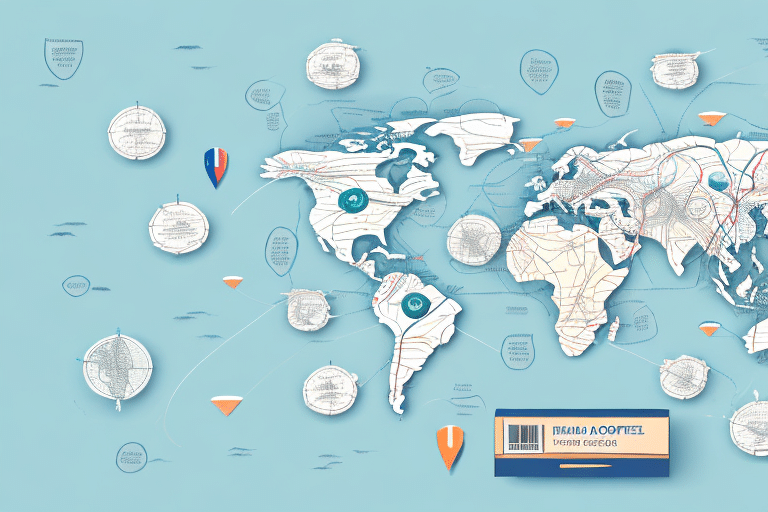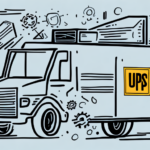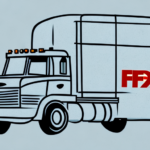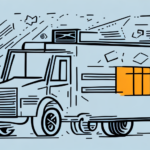What Is Parcel Shipping and How Does It Work?
Parcel shipping involves sending items in packages or parcels from one location to another. It is commonly used for transporting items that are too large, heavy, or valuable to be sent through regular mail services. Typical items include furniture, electronics, clothing, antiques, and various other goods. Parcel shipping is a vital component of the global supply chain, facilitating trade and commerce across different countries and regions.
Importance of Parcel Shipping for Businesses
Supporting E-Commerce Growth
Parcel shipping is essential for businesses that operate on e-commerce platforms. With online shopping continuing to surge—global e-commerce sales reached $5.2 trillion in 2021—the demand for reliable parcel shipping has skyrocketed. Efficient shipping ensures timely delivery, which is crucial for maintaining customer satisfaction and trust.
Enhancing Brand Reputation
Reliable parcel shipping services directly impact a business's reputation. Delays, lost shipments, or damaged goods can lead to dissatisfied customers, negative reviews, and a tarnished brand image. Ensuring that parcels are delivered on time and in good condition helps build customer loyalty and drives repeat business.
Environmental Considerations
Businesses are increasingly aware of the environmental impact of their shipping practices. The rise in parcel shipping due to e-commerce has led to increased packaging waste and carbon emissions. Companies can mitigate these effects by using eco-friendly packaging materials, optimizing shipping routes to reduce emissions, and partnering with carriers that prioritize sustainability.
The Evolution of Parcel Shipping
Historical Overview
Parcel shipping has evolved significantly from its origins in ancient civilizations, where messages and goods were transported by runners and riders. The advent of the steam engine, railways, and airplanes revolutionized parcel shipping, making it more accessible and widespread.
Technological Advancements
The digital age brought about significant changes in parcel shipping. The integration of the internet and mobile technology has streamlined the shipping process, making it more efficient and user-friendly. Innovations such as automated warehouses and real-time tracking systems have enhanced the overall shipping experience.
The Rise of E-Commerce
The exponential growth of e-commerce has been a major driver in the evolution of parcel shipping. Companies like Amazon have pushed the boundaries with innovations like drone deliveries, aiming to reduce delivery times and improve customer satisfaction. According to Forbes, drone technology is expected to play a significant role in the future of parcel delivery.
Types of Parcel Shipping Services
Standard Shipping
Standard shipping is the most common and cost-effective parcel shipping method. It typically offers longer delivery times but is suitable for non-urgent shipments.
Expedited and Overnight Shipping
For time-sensitive deliveries, expedited and overnight shipping options are available. These services ensure that parcels are delivered within a shorter timeframe, often the next business day.
Same-Day Delivery
Same-day delivery services cater to urgent needs, allowing customers to receive their parcels within hours of placing an order. This service is especially popular in urban areas.
International Shipping
International parcel shipping involves sending packages across different countries. It requires compliance with various customs regulations and may involve additional fees and longer delivery times.
Freight Shipping
Freight shipping is used for large and heavy items. It offers specialized handling and transportation options to accommodate bulky or cumbersome parcels.
Choosing the Right Parcel Shipping Provider
Reputation and Reliability
Selecting a reputable and reliable shipping provider is crucial. Companies should research providers' track records, customer reviews, and industry ratings to ensure dependable service.
Insurance and Security
Insurance coverage protects parcels against loss or damage during transit. It's essential to choose a provider that offers comprehensive insurance options and robust security measures.
Delivery Options and Flexibility
Different providers offer various delivery options, including same-day, next-day, and standard delivery. Businesses should select providers that align with their delivery needs and offer flexibility in services.
Tracking Capabilities
Advanced tracking systems allow businesses and customers to monitor the status and location of parcels in real-time. This transparency enhances trust and allows for proactive issue resolution.
The Cost of Parcel Shipping Explained
Factors Influencing Shipping Costs
The cost of parcel shipping is influenced by several factors, including weight, dimensions, distance, and the speed of delivery. Additional services such as insurance, tracking, and special handling can also affect the overall cost.
Optimizing Shipping Expenses
To manage shipping costs effectively, businesses should compare rates from different providers, consolidate shipments when possible, and optimize packaging to reduce weight and size.
Impact of International Regulations
International shipments may incur additional costs due to customs duties, taxes, and regulatory fees. Understanding and complying with the destination country's customs regulations is essential to avoid unexpected expenses.
Tips for Safe and Secure Parcel Shipping
Proper Packaging
Using high-quality, durable packaging materials ensures that parcels are protected during transit. Reinforced boxes, cushioning materials, and secure sealing are essential for safeguarding items.
Accurate Addressing
Double-checking the recipient's address minimizes the risk of misdelivery. Including contact information and using standardized addressing formats can further enhance delivery accuracy.
Choosing a Reliable Carrier
Partnering with a trustworthy shipping provider reduces the chances of lost or damaged parcels. Researching carrier performance and reliability is crucial for selecting the right partner.
Insuring Valuable Shipments
Insuring valuable or fragile items provides financial protection against potential loss or damage. Declaring the accurate value of shipments ensures appropriate coverage.
Utilizing Tracking Services
Tracking services offer real-time updates on parcel locations, allowing businesses and customers to monitor shipments and address any issues promptly.
Technology in Parcel Shipping
Automation and Robotics
Automation in warehouses and distribution centers enhances efficiency and accuracy in parcel sorting and handling. Robotics streamline operations, reducing human error and increasing processing speeds.
Real-Time Tracking and Notifications
Advanced tracking systems provide real-time visibility into parcel locations and delivery statuses. Automated notifications keep customers informed about their shipments, enhancing the overall experience.
Blockchain for Transparency
Blockchain technology offers secure and transparent tracking of parcels, reducing fraud and enhancing trust between shipping providers and customers.
Drone and Autonomous Vehicle Deliveries
Innovations in drone and autonomous vehicle technology have the potential to revolutionize last-mile delivery, offering faster and more cost-effective shipping solutions. Companies like Amazon are actively testing these technologies to improve delivery efficiency.
The Future of Parcel Shipping: Trends and Predictions
Increased Automation
Automation is expected to play a pivotal role in enhancing the efficiency and scalability of parcel shipping operations. Automated sorting, handling, and delivery systems will become more prevalent.
Growth of Same-Day and On-Demand Delivery
The demand for rapid delivery options continues to grow, driven by consumer expectations for instant gratification. Same-day and on-demand delivery services will become standard offerings in the parcel shipping industry.
Sustainable Shipping Practices
Environmental sustainability is set to become a cornerstone of parcel shipping. Companies will prioritize eco-friendly packaging, carbon-neutral delivery options, and optimized logistics to minimize their environmental footprint.
Integration of AI and Machine Learning
Artificial intelligence and machine learning will enhance route optimization, predictive maintenance, and customer service in parcel shipping. These technologies enable more efficient operations and personalized customer experiences.
Expansion of Global Shipping Networks
As international trade continues to grow, parcel shipping networks will expand to offer more comprehensive and reliable global delivery services. Enhanced cross-border logistics will support the seamless movement of goods worldwide.
International Parcel Shipping: What You Need to Know
Understanding Customs Regulations
International shipping requires compliance with diverse customs regulations, including documentation, duties, and taxes. Familiarity with the destination country's import laws is essential for smooth parcel delivery.
Documentation and Compliance
Accurate and complete documentation, such as commercial invoices and shipping labels, is crucial for international shipments. Ensuring compliance with all regulatory requirements prevents delays and additional charges.
Selecting the Right Shipping Partner
Choosing a shipping provider experienced in international logistics can streamline the shipping process. Providers with a global network and expertise in handling cross-border shipments offer greater reliability and efficiency.
Managing Shipping Costs
International shipping costs can vary significantly based on factors like distance, weight, and speed. Businesses should evaluate different shipping options and negotiate rates to manage expenses effectively.
Mitigating Risks
International shipments are subject to various risks, including delays, lost parcels, and regulatory changes. Implementing risk mitigation strategies, such as insurance and robust tracking systems, enhances the security of international deliveries.
Leveraging Technology for International Shipping
Technological advancements, such as real-time tracking and automated customs clearance systems, simplify international parcel shipping. Utilizing these technologies improves visibility and reduces the complexity of cross-border logistics.
For more detailed insights and current trends in parcel shipping, refer to authoritative sources like UPS Shipping Services, FedEx Shipping Solutions, and industry reports from Statista.






















